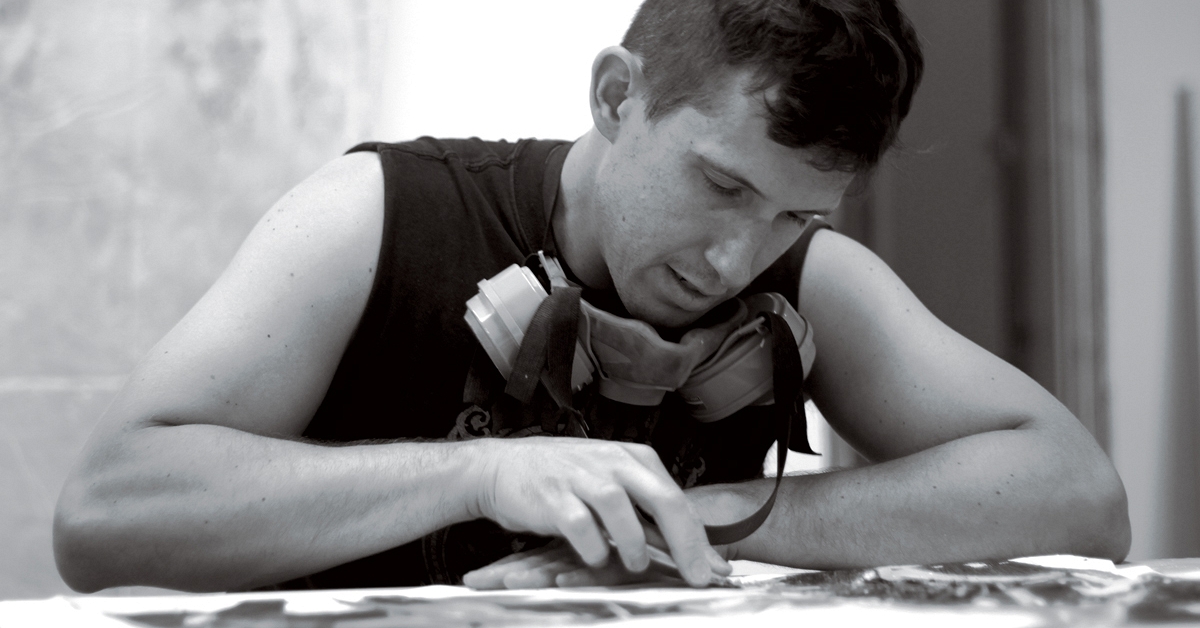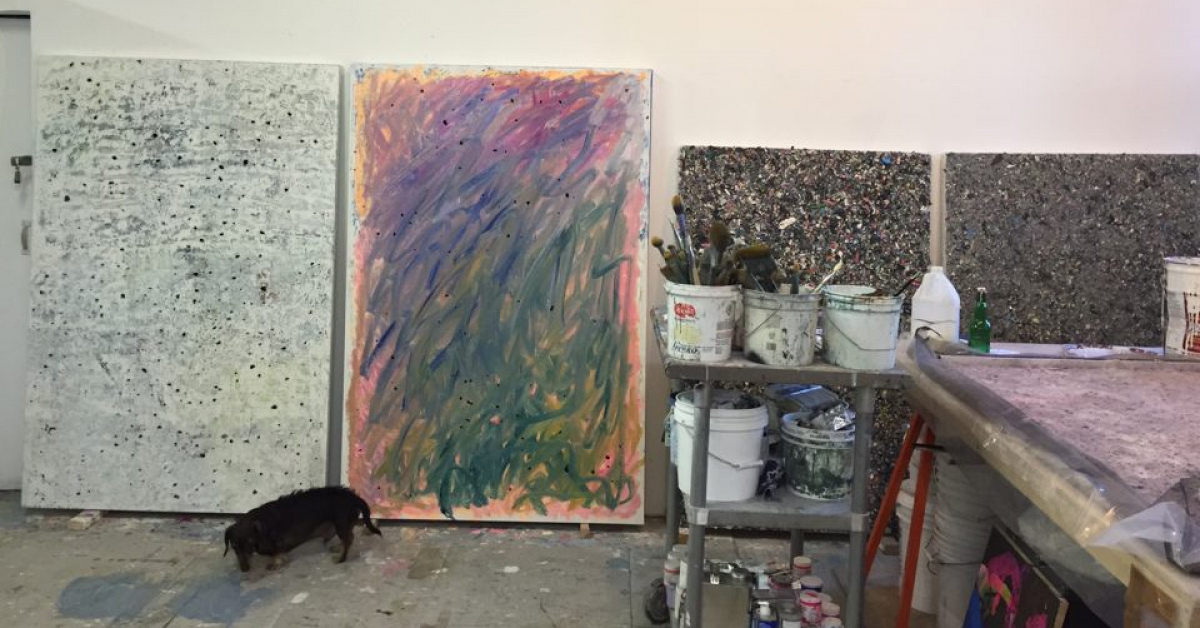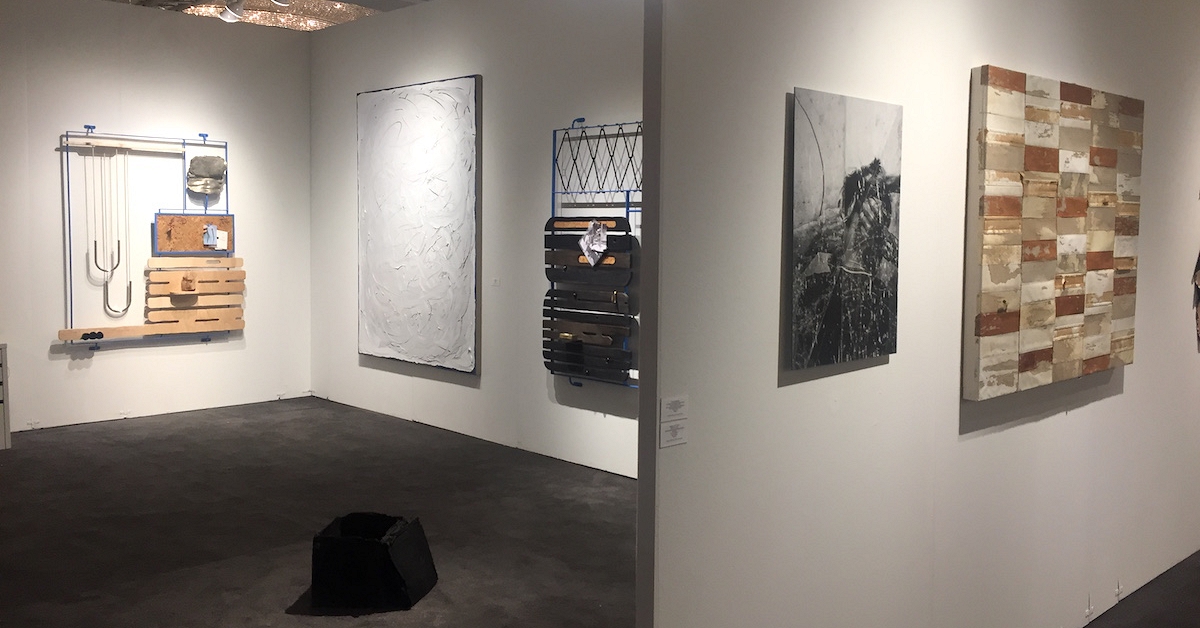Dress rehearsal: Chicago Architecture Biennial 2023
The Architectural Review / Nov 17, 2023 / by Kristina Rapacki / Go to Original
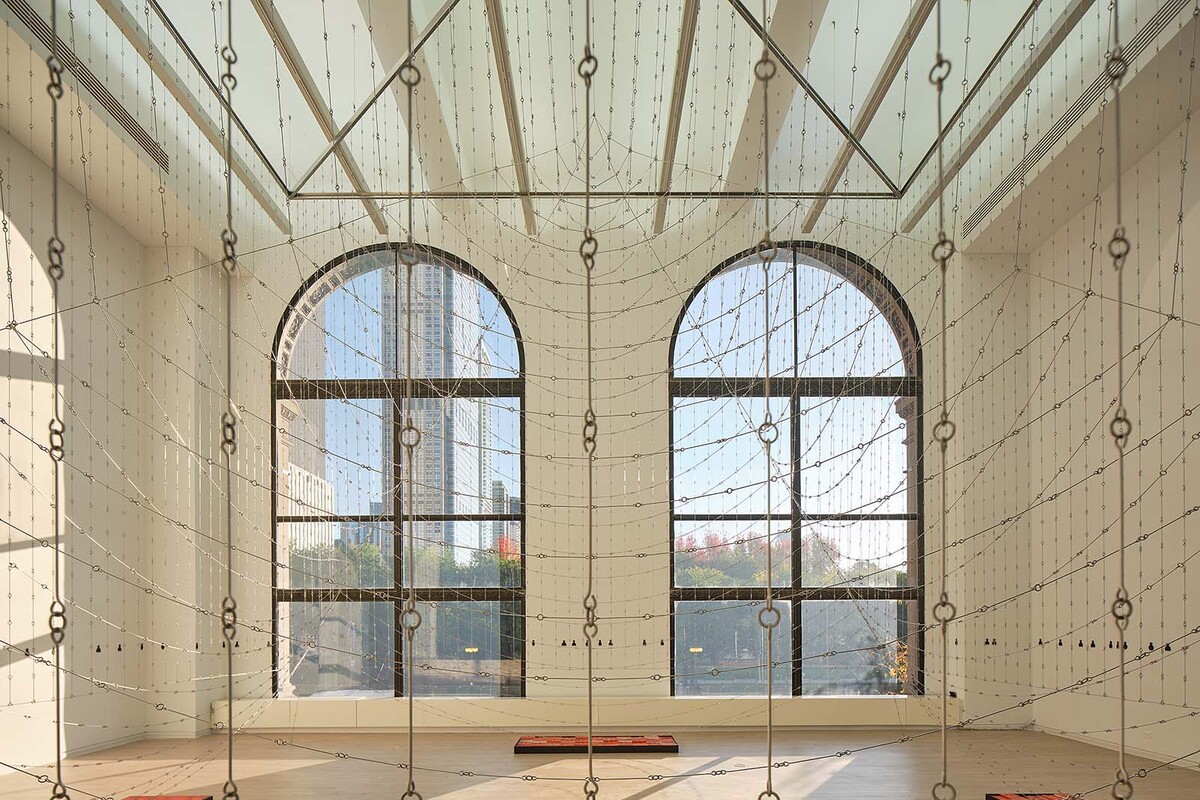
Centering on the theme of ‘rehearsal’, the fifth edition of the US’ largest architecture showcase grapples with the internal contradictions of the biennial format
In his remarks at the opening of the fifth edition of the Chicago Architecture Biennial (CAB 5), freshly elected Democratic mayor Brandon Johnson explained that the event is an opportunity to ‘show off our city to visitors from across the country and around the world’, encouraging visitors to seek out the sights that make Chicago ‘the best freaking city in the world’. The festival, which is run by a non-profit and supported by the City and a host of private sponsors, is expecting a footfall of half a million during its nearly four-month run – which is more than the 304,600 visitors who attended the Venice Architecture Biennale in 2021. This official narrative is spelled out by the targeted marketing of the opening week: if you get a cab into the city from O’Hare International Airport, you’ll find the motorway lined with CAB posters; if you get on the Blue Line public transit link, you wouldn’t know it was on.
Biennials are ephemeral events; logistically and materially, they’re often wasteful; and despite curators’ best efforts to engage with communities on the ground, they are almost always geared towards attracting international visitors to a city rather than serving local residents. Floating Museum, the Chicago-based art collective tasked with the artistic direction of CAB 5, hopes to push up against ‘biennalisation’ and its attendant problems. Founded in 2016 by artist Faheem Majeed, architect Andrew Schachman, poet avery r. young and sculptor Jeremiah Hulsebos-Spofford, Floating Museum describes its deeply embedded, community-driven practice as ‘a love letter to Chicago’. Since turning, in one of their early projects, a 9m2 industrial barge into a lively exhibition platform for local artists, and floating it along the Chicago Riverwalk up to Navy Pier, the collective has formed an extensive network of artists, partner institutions and organisations across the city. For CAB, the collective ‘didn’t just make an ephemeral installation’, explains Schachman. ‘We’re trying to invest in the constituents of this city in the long term.’
Floating Museum’s chosen theme for the fifth edition, ‘This is a rehearsal’, communicates some of this ambition. Initially, the curators considered featuring no new work, showcasing only pre-existing and ongoing projects whose presentation at CAB would help practitioners test (or rehearse) their ideas, and provide them with a biennial cash injection. ‘It’s to do with thinking beyond the biennial timeline,’ Majeed explains. In the end, some new work was commissioned, and the theme has grown into something more amorphous. CAB 5, its official blurb reads, ‘explores how contemporary environmental, political and economic issues are shared across national boundaries but are addressed differently around the world through art, architecture, infrastructure and civic participation’ – which covers just about anything. The theme does not provide much focus, though there is an air of improvisation present throughout that certainly gives CAB 5 the feeling of a dress rehearsal: whether by accident or design, a number of projects were incomplete during the opening week, with one stalled until later notice.
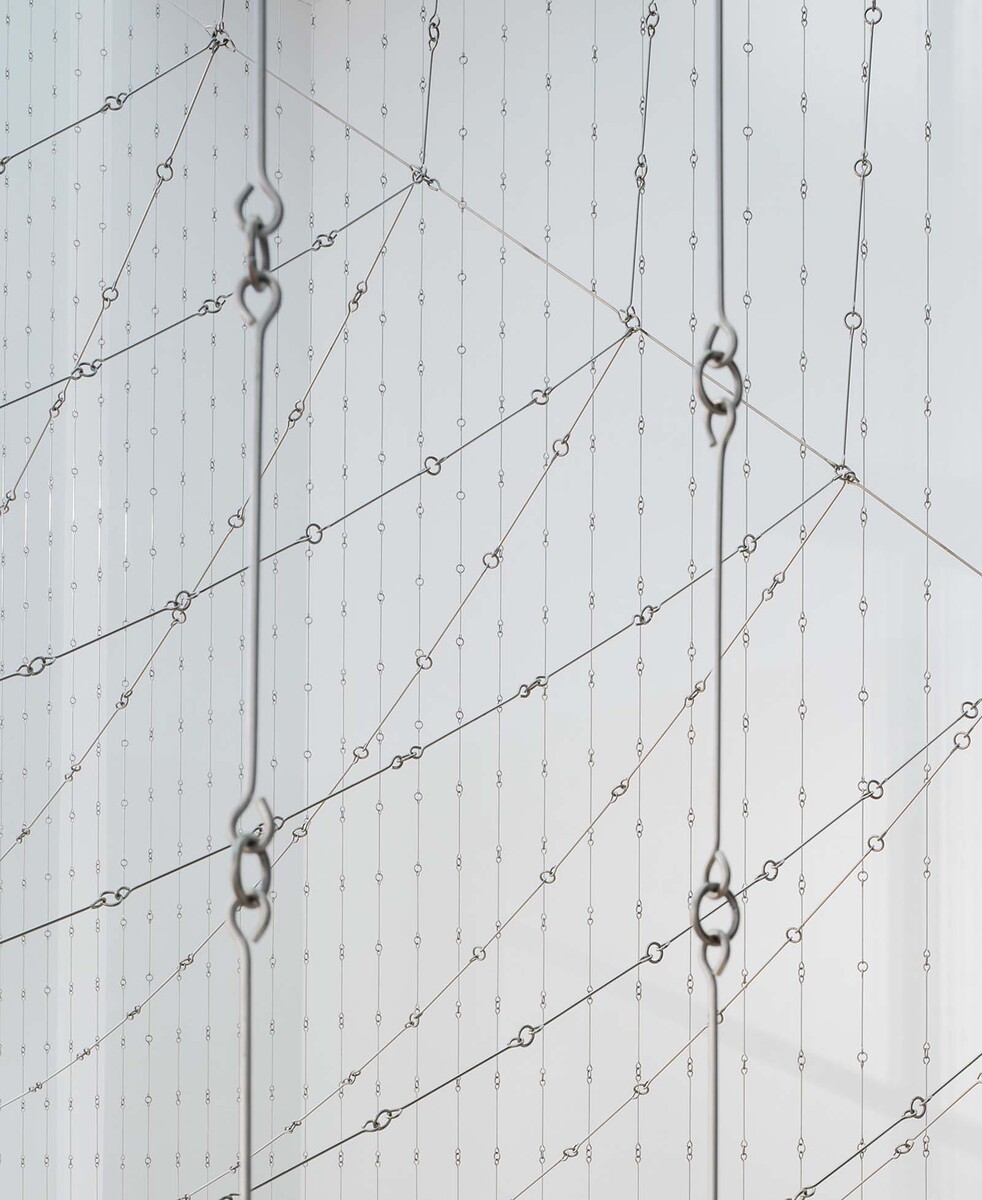
100 Links: Architecture and Land, in and out of the Americas, an installation by Columbia University’s Buell Center and AD-WO, examines the implications of the Gunter’s chain – a tool used by colonial land surveyors – for how land, value and property are defined; Credit:Tom Harris
As in previous years, the central exhibition is found at the neoclassical Chicago Cultural Center, a former public library which operates, today, as a civic centre and warm space for many of the city’s residents. At its Washington Street entrance, a land acknowledgement reads: ‘Chicago is situated on the lands of the Potawatomi people. They were the stewards of this land and lived, loved, and cared for it until forced out by non-Native settlers.’ The plaque is a permanent fixture, of course, but establishes the tenor of the display more effectively than CAB’s introductory blurb. Three flights up, one of the show’s most arresting installations, 100 Links: Architecture and Land, in and out of the Americas, by Columbia University’s Buell Center and AD-WO, confronts visitors with a roomful of suspended Gunter’s chains – a 17th-century British invention used to survey land for commercial prospecting in a range of colonial contexts. ‘There is architecture in the simplest of tools,’ writes Buell Center director Lucia Allais in the small free publication that accompanies the display. ‘The chain,’ she explains, ‘lent itself generously to the rationality of the grid.’ The links form an oppressive net, forcing visitors to creep along the walls; outside the gallery’s lofty windows and across Millennium Park, the built manifestation of the grid system rises, resonating with terrible beauty.
Far from showing off Chicago’s architectural gems, as the mayor’s office might have it, this edition of CAB is concerned with what it means to build on land laced with contaminants and trauma. The Chicago-based landscape architects Botanical City show their ongoing research into soil remediation for the Englewood Trail, a plan to regenerate an abandoned industrial train line in the predominantly African-American and Hispanic neighbourhood of Englewood on the city’s South Side. A few rooms along, artist Samuel Levi Jones and architects and landscape designers LAA Office present a project they have recently embarked on for a garden facing Grant County Courthouse in Marion, Indiana. On 7 August 1930, on the courthouse lawn, a white mob lynched three Black men – J Thomas Shipp, Abraham S Smith and James Cameron – murdering Shipp and Smith. A photograph taken at the lynching was circulated, moving Abel Meeropol to write his poem Strange Fruit, which, in turn, became the lyrics for Billie Holiday’s haunting protest song. How to memorialise such a troubled site? Levi Jones, LAA Office and their collaborator, artist-botanist Sam Van Aken, are proposing a garden with a ‘Tree of Strange Fruit’ as its centrepiece. Hosting more than 40 grafted plant species, the tree is envisaged as a metaphor of resilience and rebirth for Marion’s residents.
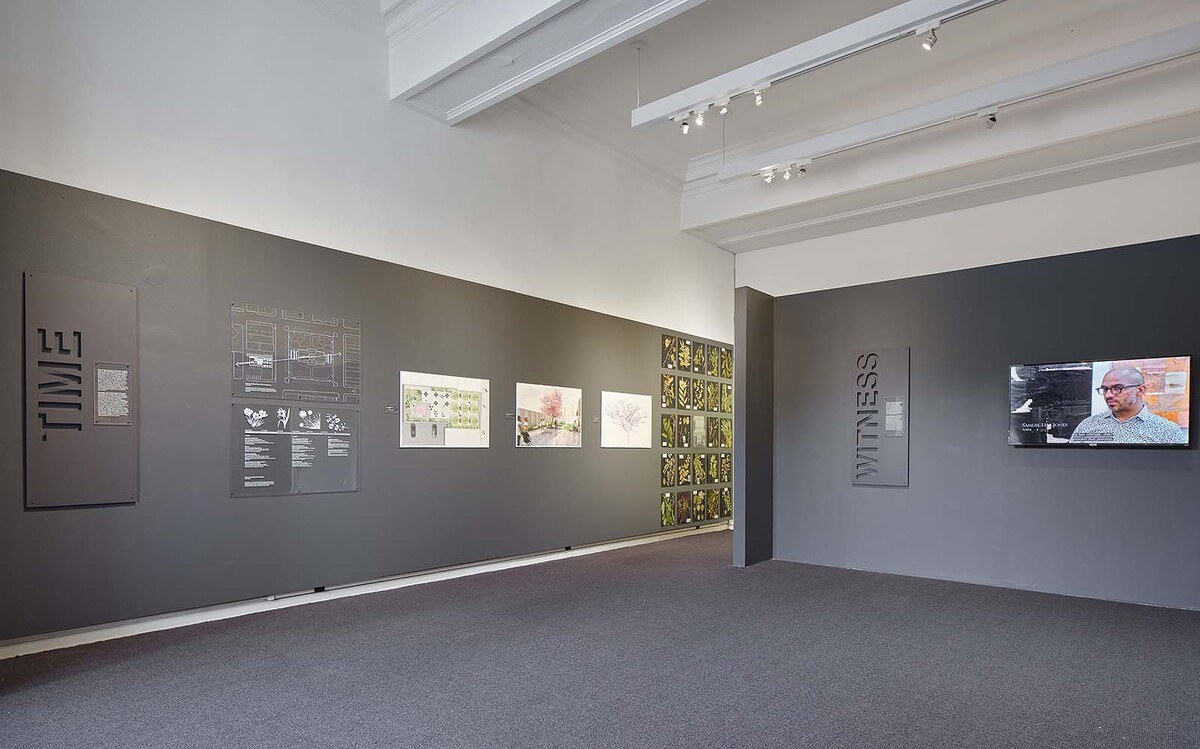
Based in Illinois’ neighbouring state of Indiana, Samuel Levi Jones and architects and landscape designers LAA Office we invited by CAB 5 to present the initial stages of their garden project at Grant County Courthouse in Marion – the site of a lynching in 1930; Credit:Tom Harris
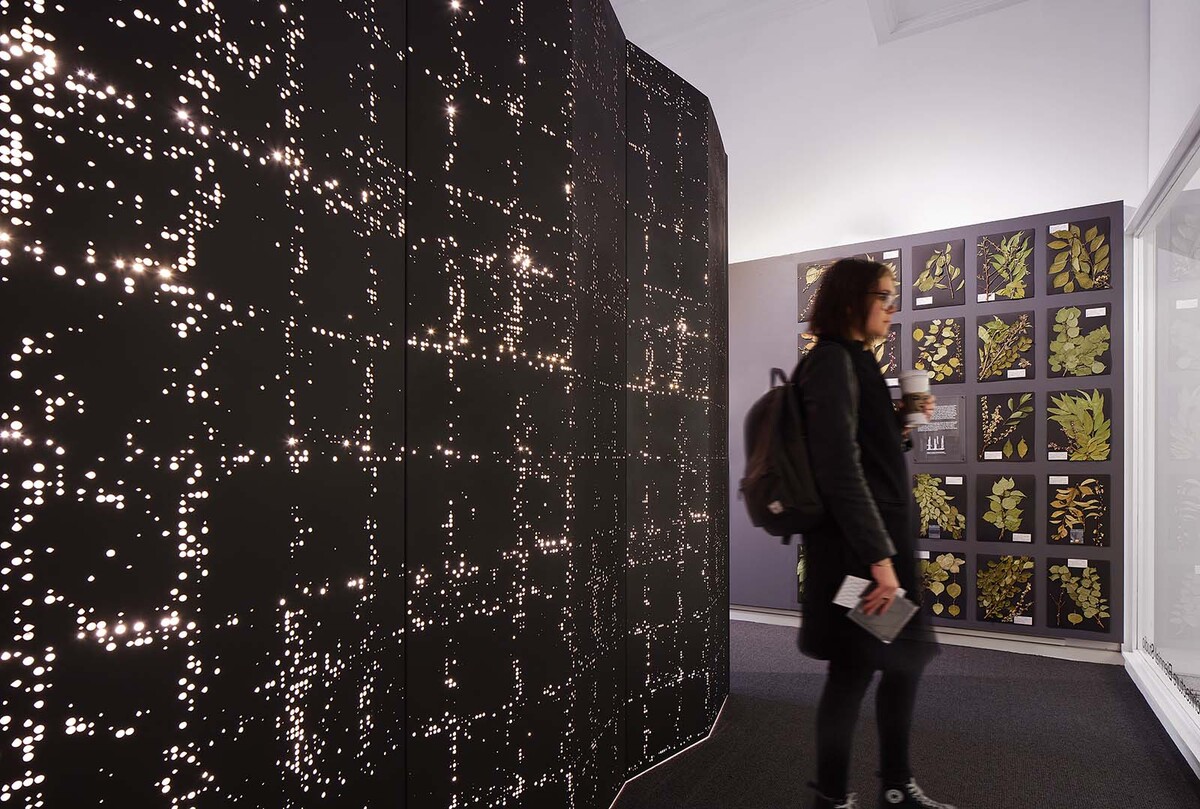
Artist Sam Van Aken collaborated with the Levi Jones and LAA Office to design a ‘Tree of Strange Fruit’ for the garden, grafted from more than 40 species of plants; Credit:Tom Harris
The challenges of monument-making continue in the Cultural Center’s resplendent Yates Gallery. Here, Chris T Cornelius of studio:indigenous has created a pavilion-like structure, ukwé·tase (meaning ‘newcomer’ or ‘stranger’ in the Oneida language), decorated with jingles worn by women in many Nations, deer skin, and a video channel showing the skies of New Mexico. As a citizen of the Oneida Nation of Wisconsin, a resident of New Mexico, and a visitor to Chicago, Cornelius wants to stress that he is a ‘stranger on this land too’. The multiple identities invoked by the installation speak to the many Indigenous tribes that have connections to what is now Chicago – the Odawa, Kaskaskia, Mascouten, and Peoria Nations, to name a few – asking what form land acknowledgements should take, given the complexity of overlapping Indigenous identities, and each tribe’s rightful claims to the land.
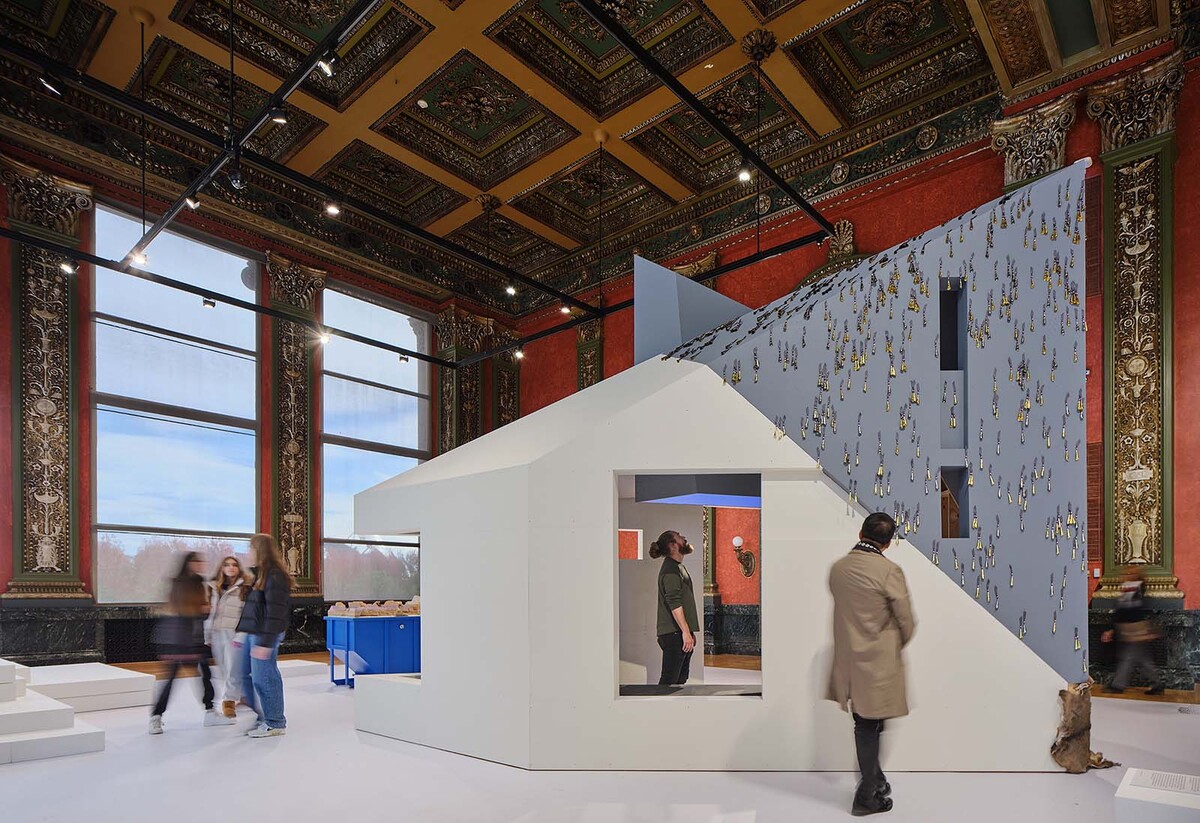
Chris T Cornelius, founder of studio:indigenous, was commissioned to design a small pavilion for the biennial, titled ukwé·tase (meaning newcomer or stranger in the Oneida language), which grapples with the complexities of Indigenous identity in what is today known as Chicago; Credit:Tom Harris
This speculative monument resonates with a highly recognisable Chicago emblem, Ludwig Mies van der Rohe’s S R Crown Hall, completed in 1956 for the Illinois Institute of Technology in Bronzeville, which has been re-imagined as a coffin in a new commission from Ghanaian master craftsman Paa Joe. Joe’s figurative ‘fantasy coffins’ are popular with Ghana’s Ga people, among whom the tradition for the exuberant designs originated, and take the form of shoes, vegetables, cars, rockets, and so on. For many, this will be a satisfying treatment for Crown Hall, whose history of racialised displacement compromises its status as a gleaming modernist icon – Mecca Flats, an apartment block that had been a thriving centre for African American life and culture, was demolished to make way for its construction in 1952. Crown Hall has had its fair share of send-offs before, though largely on stylistic grounds: Charles Jencks disliked its idealised form while Chicago’s own pomo iconoclast Stanley Tigerman sent it sinking, Titanic-style, into Lake Michigan in a 1978 collage. Paa Joe’s is the final nail in the coffin for Crown Hall as a Chicago monument – if you’ll excuse the pun.
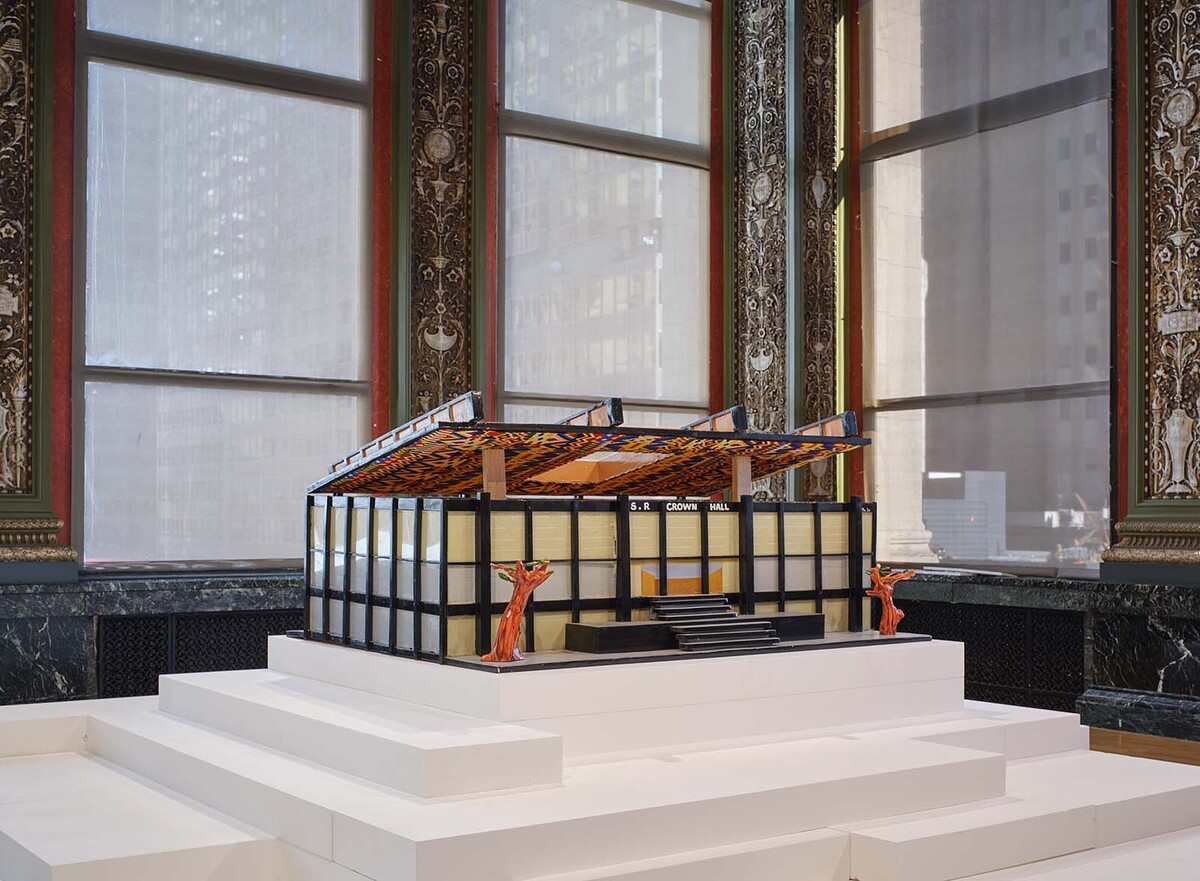
Turning one of Chicago’s most recognisable modernist buildings – Mies van Der Rohe’s S R Crown Hall – into a coffin, Paa Joe’s Restoring old houses suggests that other monuments are available; Credit:Tom Harris
The story of Mecca Flats was told in the 2019 edition of the biennial, and there are other lessons drawn from previous years. Like 2021’s edition, which was unable to be hosted in the Cultural Center due to pandemic restrictions, CAB 5 has expanded to include sites around the city. These neighbourhood commissions have mostly gone to local practitioners and organisations already plugged into the city’s arts communities, and this is where Floating Museum’s stated aims for the biennial are most successful. In South Works, the site of a former steel plant and one of Chicago’s most polluted neighbourhoods, the Black and woman-led non-profit Urban Growers Collective has a 14-acre urban farm, one of eight sites in the city. As a participant in CAB, the collective was able to secure $40,000 of biennial money to build an on-site two-storey maker space. Designed by New York-based David Benjamin and his studio, The Living, which is known for its experimental prototyping and use of biomaterials, the construction of this pavilion had only just begun when CAB 5 opened. But this is not the point – the structure will live beyond biennial time. The Urban Grower’s Collective provides an essential service where the city has failed, remediating toxic soil (‘I don’t need to check if the soil is contaminated,’ says founder Erika Allen of the site, ‘I know it is’) and selling affordable produce to communities without access to supermarkets. It is reliant on various forms of funding, including arts funding such as that secured through CAB 5.
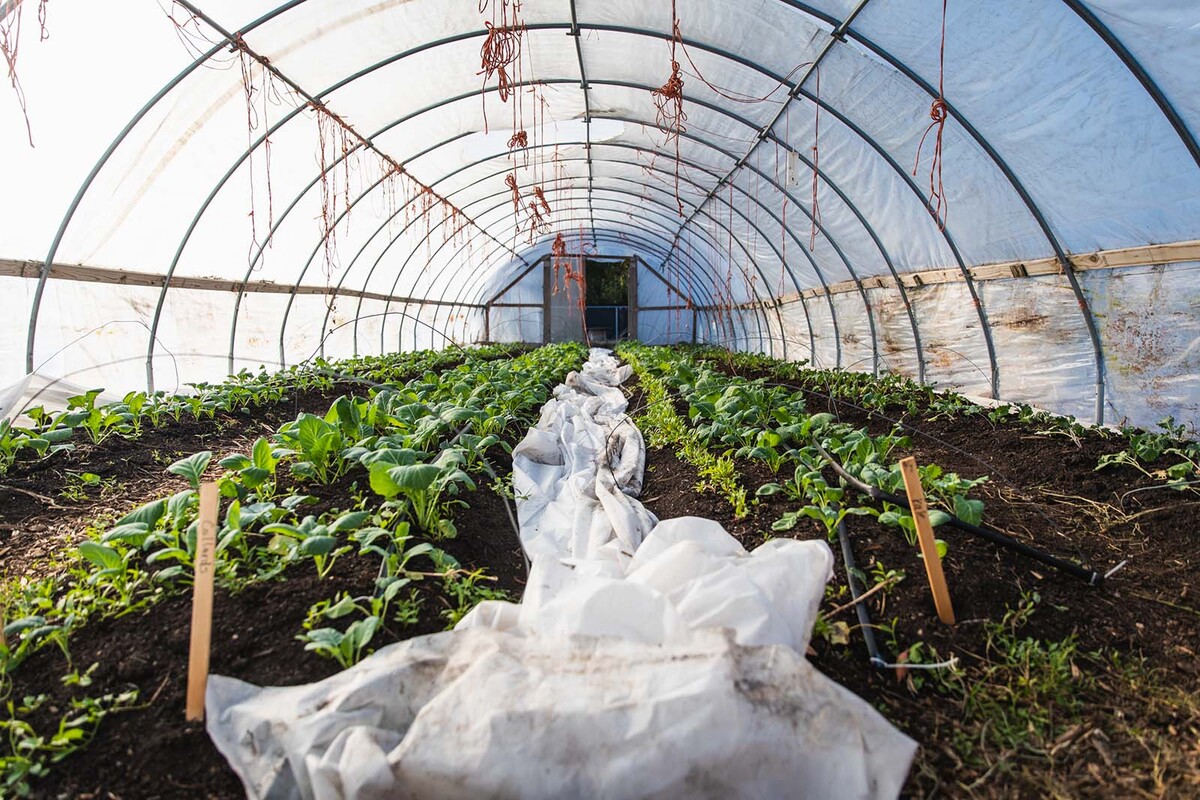
At the Urban Growers Collective’s 14-acre South Works farm, a cash injection from CAB 5 has allowed the organisation to commission a new maker space (not pictured). The building, designed by The Living, is currently under construction; Credit:Cory Dewald
By comparison to the Urban Growers Collective and its commitment to providing arable green space for Chicagoans, other displays feel lightweight. At the Chicago Architecture Center (CAC), housed since 2018 in Mies’ One Illinois Center, Paris-based practice Chartier Dalix presents Architecture as an ecosystem, an exhibition showcasing their buildings and landscaping work in France, as well as their ‘research into downtown Chicago’. Particularly superficial is a wall of AI-generated images of the Loop overrun by greenery, which outsources any thinking about how to sustainably transform dense urban environments to an algorithm and reduces the idea of ‘architecture as an ecosystem’ to mere visual representations of greenery. You are better off going next door, to the CAC’s Skyscraper Gallery, which has a display on about structural mass timber (though this is not part of CAB 5), or heading from the Riverwalk to the West Loop to see MOS Architects’ Bio-Block Spiral, a pavilion using Prometheus Materials’ experimental algae cement blocks – if you want to see applied examples of incorporating plant and protist life in construction.
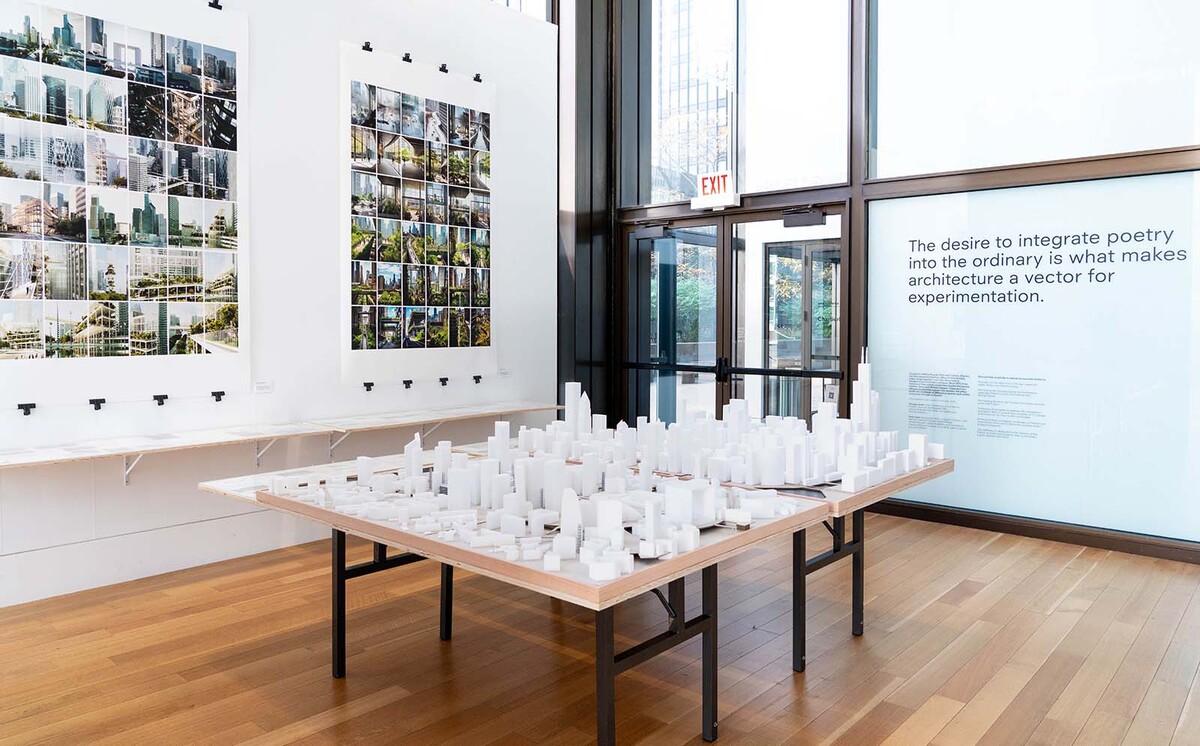
Architecture as an ecosystem, an exhibition at the Chicago Architecture Center featuring the work for Paris-based practice Chartier Dalix, presents, among other things, a grid of AI-generated images of the Loop made ‘green’; Credit:Anna Munzesheimer
There is an underlying anxiety about many aspects of the biennial format present at CAB 5, including a concern about the material costs of putting on an event of this scale – this is shared by the industry at large, which has in recent years taken to producing exhibits of the flotsam and jetsam of other exhibits. Consider the German pavilion at this year’s Venice Architecture Biennale, with its ‘materials bank’ drawn from the previous year’s art biennial, or Resolve Collective’s them’s the breaks at the Barbican’s Curve gallery in London, where visitors could claim leftover exhibition design materials for their own DIY projects. Here, Floating Museum should be commended for commissioning Chicago Art Institute exhibition designer Leticia Pardo to create its display system, titled Ecotone, from standard scaffolding and geofoam (used for modelling by landscape architects). Like the best projects at CAB 5, these materials are already in circulation; they have been stopped on their way for a moment, and will return again, in a few months’ time, to continue performing their role in the production of the city.
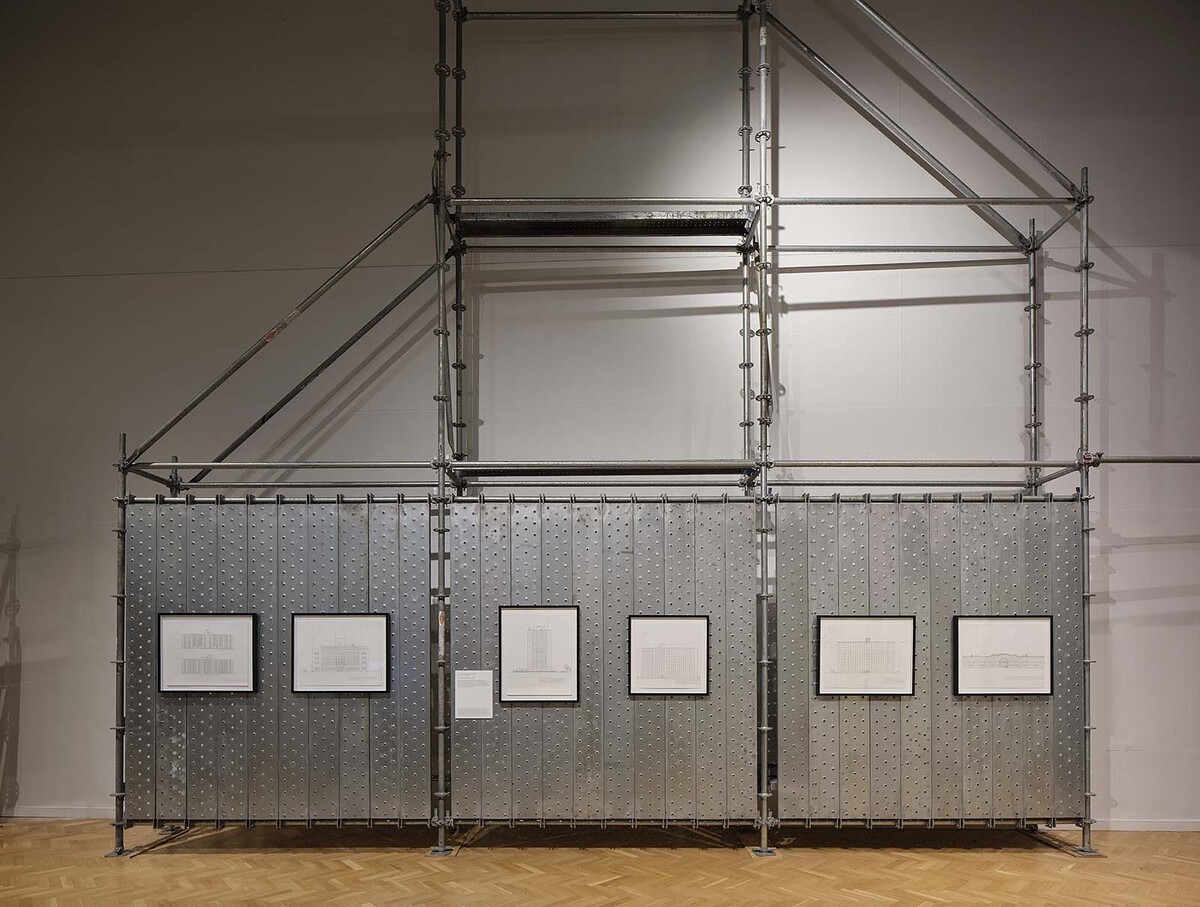
Leticia Pardo’s Ecotone is a display system comprising standard scaffolding. On display is Cabrini Green Extension by Kareem Davis with Project Onward, a series of drawings highlighting elevations of Chicago Housing Development buildings; Credit:Tom Harris

